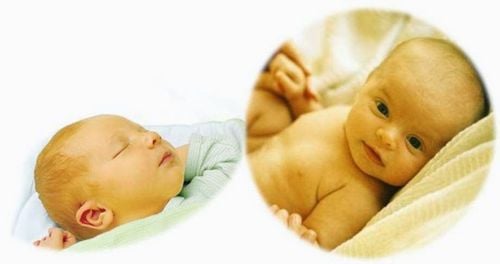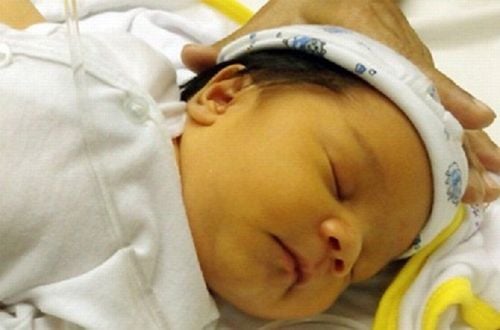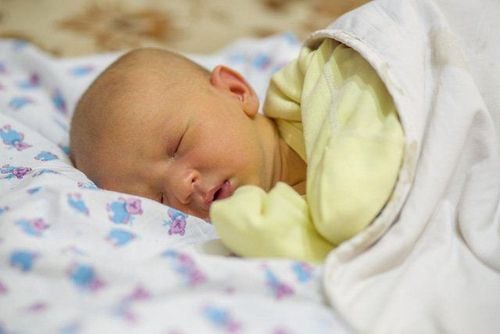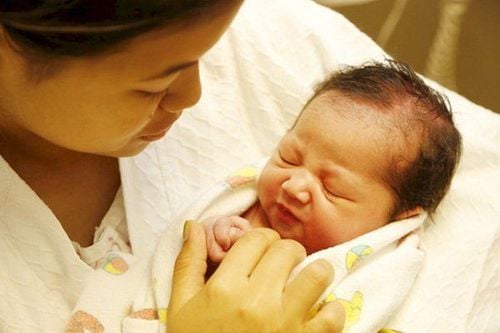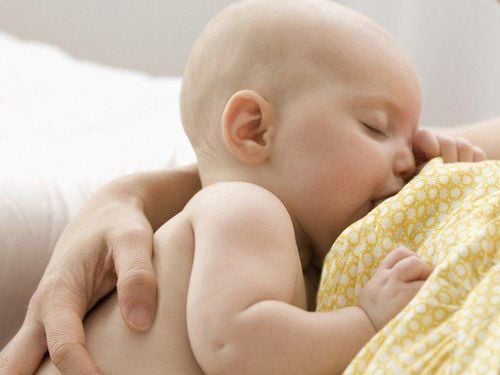This is an automatically translated article.
The article is professionally consulted by Master, Resident Doctor Dang Thi Ngoan - Pediatrician - Neonatologist - Department of Pediatrics - Neonatology - Vinmec Ha Long International Hospital.Jaundice is a common symptom in infants caused by many different causes. One of them is due to an increase in indirect bilirubin in the infant's blood, also known as free.
1. What is jaundice due to hyperbilirubinemia?
Bilirubin is an orange-yellow bile pigment, formed from the breakdown (cleavage) of heme (blood) in red blood cells. Another definition is that bilirubin is a substance involved in catabolism - the process necessary to release the body's waste products arising from the destruction of aged red blood cells.Jaundice due to indirect hyperbilirubinemia in the newborn is a condition of increased destruction of red blood cells, with decreased function of the enzyme that metabolizes bilirubin, or due to increased reabsorption of bilirubin from the intestine. The consequences of this condition have the risk of causing brain damage and leaving severe sequelae later.
2. Causes of jaundice due to increased indirect bilirubin
2.1. Abnormalities in bilirubin production Allogeneic immunity: Incompatibility of blood groups RH, ABO, sub blood group; Abnormalities of red blood cell biochemistry: G6PD deficiency, PK enzyme deficiency, congenital porphyria,... Abnormal red blood cell structure: Hereditary round red blood cell disease, hereditary oval red blood cell, solid aggregation congenital erythrocytosis,... Infections: Bacteria, viruses, protozoa; Isolated blood mass; Polycythemia. 2.2. Abnormalities in the liver's absorption of bilirubin Gilbert's syndrome is a common genetic condition in which the enzymes necessary for the use of bilirubin become abnormal, leading to impaired liver function and jaundice.2.3. Abnormalities in bilirubin conjugation Involving the UGT enzyme that catalyzes the conjugation of bilirubin in the liver:
Crigler-Najjar syndrome types I and II; Lucey-Driscoll syndrome; Pyloric stenosis, intestinal obstruction, hypothyroidism... 2.4. Abnormalities in bilirubin excretion The liver's excretion of bilirubin is impaired due to hepatocellular damage and mixed hyperbilirubinemia.
2.5. Abnormalities in the liver-intestinal cycle Jaundice associated with breast milk: The infant is not breastfed enough or the composition of breast milk is changed; Jaundice due to breast milk: Appears after 3 - 5 days after birth, in some cases lasts from 2 - 6 weeks and up to 3 months. The maximum bilirubin concentration reaches 20 - 30mg/dl and will decrease after Stop breastfeeding for 1 to 3 days. The child was healthy and gaining weight well, with no evidence of hemolysis. 2.6. Mixed causes Some drugs such as Streptomycin, Chloramphenicol, ... not only cause hemolysis but also inhibit the activity of UGT enzymes; Common causes: Infection, premature birth, hemorrhagic hematoma,... Rare causes: Disease in the red blood cell membrane, endocrine disease, ...

3. Diagnosis of jaundice due to indirect hyperbilirubinemia in newborns
3.1. Risk factors for severe jaundice Jaundice in the first 24 hours; Blood group incompatibility ; Gestational age < 38 weeks, the risk increases with smaller gestational age; Have hemolytic disease (lower G6PD); The child's brother/sister has jaundice and is receiving phototherapy; Have hemangioma or serous tumor; Excessive or inadequate breastfeeding causes weight loss of > 12% at birth; East Asian race; Jaundice before discharge from hospital; Mother has diabetes; Children with polycythemia vera; Male gender; Mother > 25 years old. In contrast, the risk factors decreased with gestational age > 41 weeks and the infant was bottle fed.3.2. Clinical sequelae of neonatal jaundice due to indirect hyperbilirubinemia: Transient encephalopathy with clinical manifestations of excessive lethargy and nuclear jaundice (neurotoxicity) with crying, coma, .. .; Bilirubin toxicity when TSB (total Bilirubin in blood) > 25mg/dl in full-term infants or lower concentrations in sick, low birth weight or preterm infants; Note that in premature infants, clinical symptoms are less typical.

3.4. Diagnosis In addition to distinguishing between physiological and pathological jaundice, the doctor also needs to diagnose the cause of jaundice as:
ABO disagreement; Infection; Or reabsorption.
4. Treatment of jaundice caused by indirect hyperbilirubinemia in newborns
The principles of treatment of indirect hyperbilirubinemia in neonates include specific treatment with phototherapy or exchange transfusions and supportive therapy.4.1. Light therapy Indication The doctor will appoint light therapy for children with jaundice at term, full weight, in case of low birth weight or premature babies, the decision to start phototherapy is based on the TSB index and weight of the child. .
In general, there is no exact standard to stop irradiation, the doctor will also measure the TSB index and make a decision based on the age and weight of the child.
Principle Use blue light or double-sided white light system, the distance from the lamp to the pediatric patient is within 40cm. The more the area exposed to the lamp, the more effective it is. Light irradiation is continuous and only stopped during breastfeeding, while maintaining adequate fluid and urine output during irradiation. Infants continue to suckle during irradiation and require intravenous fluids if feeding is inadequate or the child shows signs of dehydration/weight loss.
Note, doctors do not recommend sun exposure to prevent lowering of total bilirubin in the blood.
Monitoring It is necessary to monitor the child's temperature, weight, water deficiency, bowel movements, light exposure time, jaundice level and check TSB of the child after irradiation depending on each case.
Side effects There is a risk of erythema, loose stools, hyperthermia, dehydration, especially "bronze baby" syndrome.

Technique The volume of blood replaced is twice the volume of the patient's blood. It is then possible to remove 25% of the total body bilirubin and decrease/increase the TSB when the intravascular balance is established.
Complications can include: infection, infectious disease, thrombocytopenia, coagulopathy, electrolyte disturbances, venous thrombosis, necrotizing enterocolitis, graft rejection, cardiac arrest or even sudden death.
4.3. Supportive treatment Antibiotic treatment if infection is present; Albumin infusion in children with severe jaundice and blood albumin < 3g/dl; Administer intravenous immune globulin (IVIg) 0.5 -1g/kg if necessary; Anticonvulsants with Phenobarbital; Physiotherapy for children with nuclear jaundice. In addition, to prevent neonatal jaundice due to severe indirect hyperbilirubinemia, it is necessary to identify children at risk of progressing to severe jaundice, closely monitor and treat with light therapy as soon as indicated. . Parents can detect jaundice early by observing the baby's skin color under sunlight every day. If there are signs of jaundice, the child should be taken to a medical facility for examination, especially when the jaundice spreads to the hands and feet, the child is lethargic, weak or stops suckling, stiffening, convulsions or prolonged jaundice.
Please dial HOTLINE for more information or register for an appointment HERE. Download MyVinmec app to make appointments faster and to manage your bookings easily.





